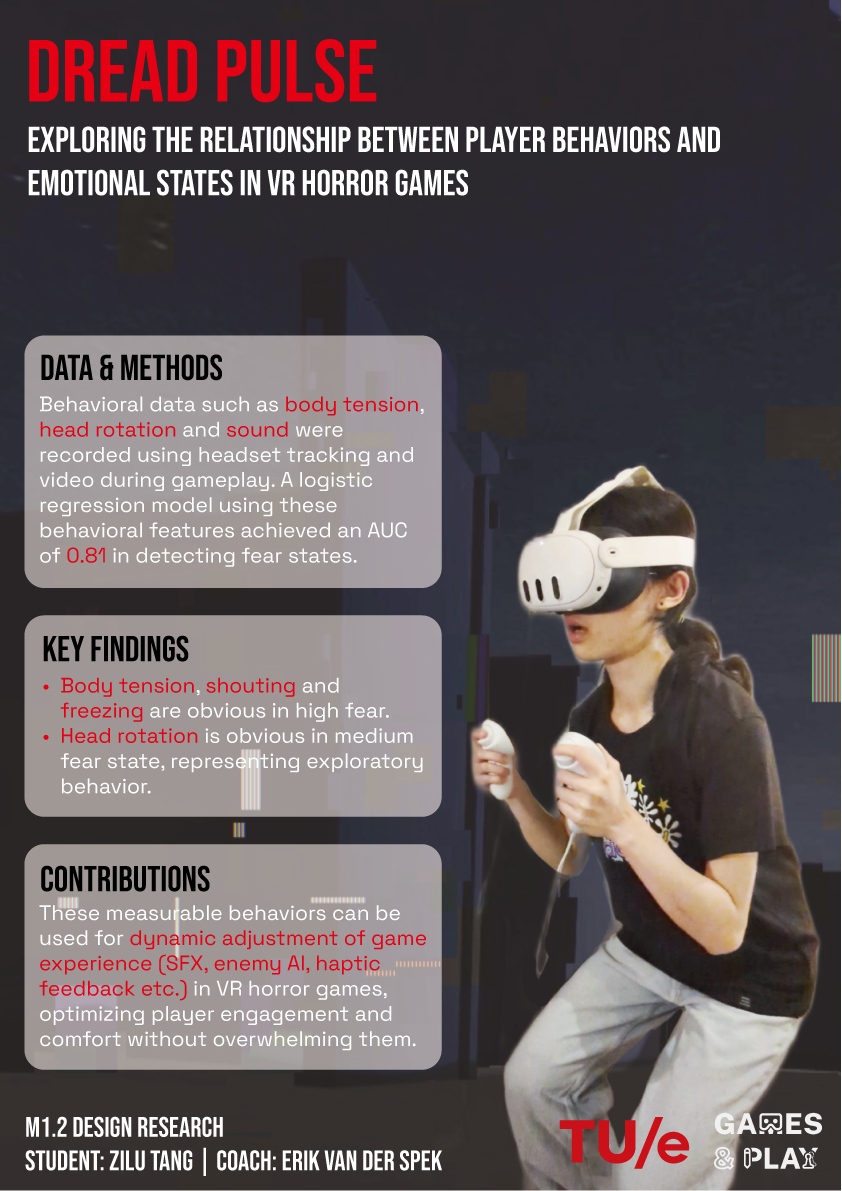Dread Pulse
Project information
- Category: Game Design Research
- Duration: 3 months
- Team: Zilu Tang
- Role: Researcher, designer, developer
- Tools: Unity, Meta Quest 3, XR interaction toolkit
Virtual Reality (VR) horror games offer unique opportunities for emotional immersion, but most games still rely on static difficulty settings and pre-set jumpscare, but overlook dynamic player behavior as a cue for adaptive experiences. This study explores the relationship between in-game behaviors - such as head rotation, controller gripping, and vocal reactions - and the emotional states of players experiencing fear in a VR horror setting. A VR horror game, Dread Pulse, was developed on Meta Quest 3 to simulate horror scenarios while collecting detailed behavioral data. Participants' gameplay sessions were analyzed alongside self-assessed fear levels, revealing the relationship between behaviors and different levels of fear. Logistic regression analysis demonstrated that a small set of behavioral features (step-back, controller gripping, and head rotation) can effectively predict high fear states (AUC = 0.81). These findings offer valuable insights for future development of behavior-driven dynamic experience adjustment systems in immersive games.
Research Details






